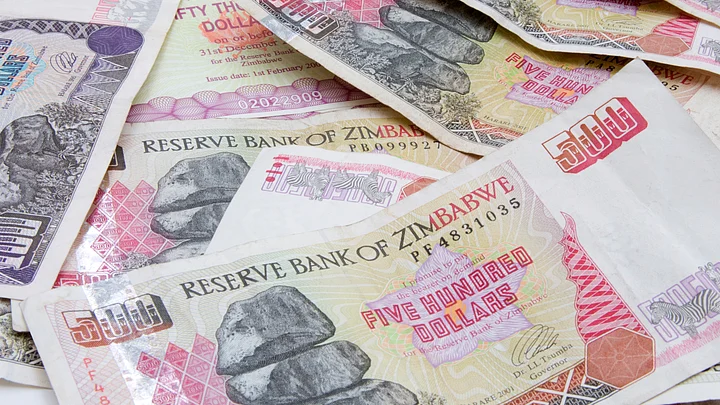If you have one American dollar in your pocket, fly to Harare, capital of Zimbabwe, a landlocked African nation west of Mozambique.
And make sure you get there before September. On arrival, immediately head for the nearest bank branch and exchange that $1 for Zimbabwe dollars (Z$).
Bingo, you could become one of the world’s first “quadrillionaires.” Actually, a 3.5 quadrillionaire.
If you’re wondering what that number means, here’s the answer. It’s equal to Z$ 35, 000,000,000,000,000, or 35 followed by 15 zeroes. Warren Buffett, eat your heart out.
Zimbabwe Dollar Phased Out
The Guardian reported Friday, June 12, that Robert Mugabe’s government had decided to reset its exchange rate after years of hyperinflation, which peaked at an astonishing 500 billion% in year 2008.
I presume his decision to debase the currency was prompted by the sheer physical effort to lug sacksful of Z$ to catch a taxi ride, or buy a box of matches. At 91, it must have been a strain on President Robert Mugabe’s muscles as well.
He’s been the unquestioned ruler of this nation now for 35 years. In 1980, it gained independence from white-supremacist Rhodesia and was renamed.
From a respected anti-colonial revolutionary, he turned into a despot soon afterwards, using state security agencies to crush – and kill – dissenters. And, um, his state police was trained by North Korea. You get the picture.
By 2000, he managed to destroy the economy as well, which led to the hyperinflation number of 2008.
But hold your breath. With its 500 billon% price rise in 2008, which meant that prices doubled – every day – Zimbabwe still gets the silver medal in global hyperinflation history.
Global Hyperinflation
The gold goes to Hungary, in post-WW II 1946, when prices more than trebled daily. Using a calculator, this means prices doubled every 15 hours. So, if a Hungarian bought a matchbox for a rupee (or pengo, as the currency was then known) at 6AM, he’d have to go and buy his next box at 9PM for two bucks.
In Weimar Germany, inflation peaked in 1923, after its defeat in WW-I and the punishing reparations the Allies forced on it. Every month, prices went up 29,500%, meaning it took 3.7 days for a matchbox to double in price. Among developed nations, this is the highest recorded hyperinflation in history.
There’s a dark side to this tale. Germany’s hyperinflation stoked the social discord which led to the rise of the Nazi Party under Adolf Hitler and the calamity of WW-II and the Holocaust.
In 1919, John Maynard Keynes predicted that something extreme like this would happen if the Allies sucked so much money from an already-beaten Germany. That book was called, with deliberate irony, ‘The Economic Consequences of the Peace.’ Well, the peace didn’t last long.
However, the bronze medal for hyperinflation goes to Yugolsavia, 1994, soon after the Soviet Union broke up and civil war broke out there. It hit an astounding 3,130,000,000% per month: matchboxes would double in price in 1.4 days.
Most of the global hyperinflation data was compiled by two academics at Johns Hopkins University in 2012: Steven H Hanke and Nicholas Krus and is available here.
Great Bengal Famine
Sadly, there is no accurate hyperinflation data for India, but it is undeniable that these episodes have occurred here too. Probably the worst was during the Great Bengal Famine of 1943, when after a relatively poor crop, Winston Churchill decided to divert most available grain to British soldiers fighting in Burma.
It’s been called the worst ‘man made’ famine in history. Anecdotal evidence says rice prices went up three to four times daily, depending on where you where: that’s a monthly food inflation rate between 6,000% and 8,000% -- certainly qualifying as hyperinflation.
Over 3 million people are estimated to have died in what’s now modern Bengal, Bangladesh, Orissa and Bihar. It laid the ground for immense resistance to British rule and eventually their eviction from India and the loss of empire, worldwide.
The world over, inflation and its accompanying miseries have inevitably followed, or led to, political turmoil. India’s farm crisis today, and the burst of food price inflation it’ll bring this year, should worry policymakers in New Delhi and the states.
(The writer is a Delhi-based senior journalist.)
(At The Quint, we question everything. Play an active role in shaping our journalism by becoming a member today.)
